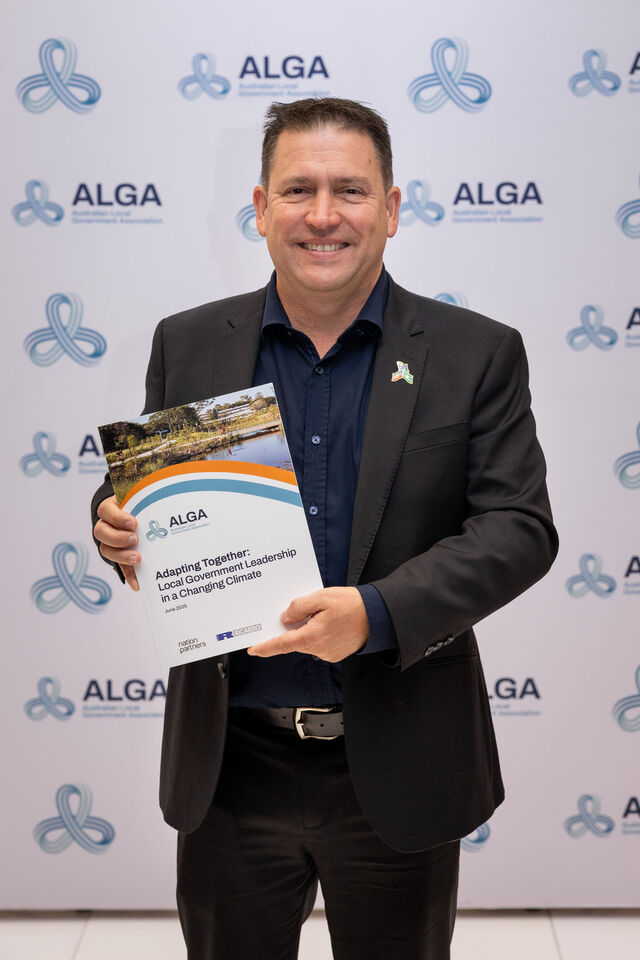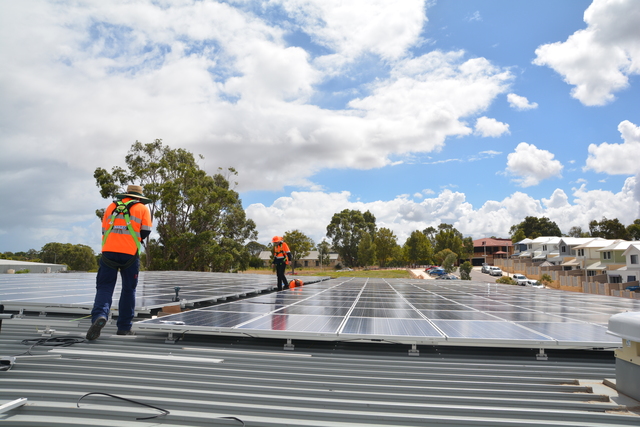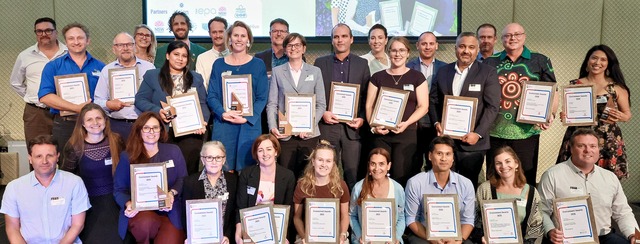Australia’s councils are expected to spend more than $2 billion over the next five years to future-proof their communities from the changing climate, according to new Australian-first research released in late June.
ALGA’s Adapting Together: Local Government Leadership in a Changing Climate report showed the climate-resilient investments by councils are estimated to provide up to $4.7 billion in avoided costs and benefits to communities by 2030.
Speaking at the National General Assembly (NGA) in Canberra, ALGA President Mayor Matt Burnett said: “The changing climate is putting pressure on communities, and this ground-breaking research shows councils are leading the way in preparing for and managing these ever-increasing impacts, including from natural disasters.
“These examples include planting trees to combat heat, providing community education and preparation for bushfires, coastal hazard management systems and upgrading stormwater systems and flood resilience programs,” Mayor Burnett said.
“The climate of every community is different, and it’s impressive to see innovative examples and strong leadership by councils across Australia to reduce climate risks and future-proof their communities.”
The new report used more than 200 examples of councils taking action to address climate impacts, and five case studies to model the national value of local government climate adaptation.
“Climate-resilient infrastructure is expensive and takes time to build, so we need sustainable funding from the Federal Government to implement long-term planning and adaptation now and into the future,” Mayor Burnett said.
“We are asking the Government for a new $400 million climate adaptation fund, distributed to all Australia’s councils each year, to deliver ongoing and sustainable place-based climate solutions.”
Lord Mayor of Hobart Anna Reynolds said: “The Federal Government rightly recognises the best climate solutions come from those closest to the risks but there’s a huge gap between recognising this principle and providing the funding needed to deliver it to local communities.
“In Hobart, we’ve seen how collaboration through the ‘Sparking Conversations, Igniting Action’ program helped households prepare for bushfires, manage vegetation, and strengthen community connections.”
Lockyer Valley Regional Council Mayor Tanya Milligan said: “We have built a strong reputation for ensuring we adapt to climate challenges through a range of measures such as flood modelling, limited development zones, buy-backs and flood mitigation.
“Adapting to climate challenges is critical for local governments, and it’s vital other levels of government consider and invest in the recommendations of this new report, to ensure communities at risk have a safer and more hope-filled future.”
Background and key findings
• Cost-benefit analysis outlined in the report estimated council projects produced benefits of at least $0.8 and $3.1 per $1 of cost.
• Therefore, a conservative estimate of local governments’ expenditure on climate adaptation is $400 million per annum, or $2 billion to 2030. This $2 billion investment is estimated to benefit local communities by between $2.2 and $4.7 billion.
• ALGA’s climate adaptation report was produced in partnership with Nation Partners and Ricardo.
Council case studies
The following council case studies are featured in the Adapting Together: Local Government Leadership in a Changing Climate report:
City of Darwin (NT) – Urban cooling
The 2030 Greening Darwin Strategy aims to increase tree canopy coverage in areas vulnerable to heat and cyclones. It includes planting cyclone-resistant, climate-suitable trees along transport routes, near recreational facilities, and in suburbs with low canopy cover.
Lockyer Valley Regional Council (QLD) – Flood management
Following the 2022 floods, the Australian and Queensland Governments launched a joint initiative to aid Queensland residents in recovery and flood resilience. The Voluntary Home Buy-Back (VHBB) program was part of this effort. Lockyer Valley participated by purchasing 24 properties in a high flood risk area.
City of Hobart (TAS) – Bushfire resilience
The City of Hobart was involved in the ‘Sparking Conversations, Igniting Action – Greater Hobart Resilience Program’ to improve bushfire preparedness through education, household planning, and vegetation management. The program boosted the capacity to respond to and recover from bushfires.
Moyne Shire Council (VIC) – Coastal hazard management
Moyne Shire Council amended planning in Port Fairy, in southern Victoria, to prevent new development in areas at risk from sea level rise, through a coastal hazard management plan. This policy addressed long-term climate risks in the area, which is prone to flooding and coastal erosion, storm surges, and rising sea levels due.
City of Onkaparinga (SA) – Climate risk assessment and response plan
The City of Onkaparinga undertook a climate change risk assessment to identify climate-related gaps in the council’s strategic and governance structures. In addition, the assessment identified physical and transition risks impacting service delivery, asset management and operations. The risk assessment culminated in the development of the Climate Change Response Plan 2022-2027.
City of Cockburn (WA) – CY O’Connor Artificial Reef
The City of Cockburn, in partnership with global marine and subsea services company MMA Offshore, doubled the CY O’Connor Artificial Reef’s 135 bombora modules to 270 in November 2024. Preliminary findings by The University of Western Australia (UWA) and Oceans Institute showed the reef has contributed to a 10 per cent reduction in wave height and reduced wave energy by 20 per cent.
Cobar Shire Council (NSW) – Planning a climate resilient airport
Cobar Shire Council integrated climate change considerations into a 20-year development strategy for Cobar Regional Airport. The plan outlined climate-responsive strategies to ensure the resilience of airport operations and infrastructure. It also included a revised airport layout to minimise environmental risks.








